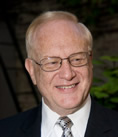
Ace the Interview: Focus on the Interviewer
with Michael Goodman

Overview/What You Will Learn
Every interviewer speaks a certain language. The best thing you can do to convince your interviewer that you are the right person for the job is to communicate your story using that same language. But first you have to prepare by finding out what language your interviewer speaks and how your interviewer prefers to think. Beyond B-School President and expert interviewer Michael Goodman describes the four key languages in which every human speaks, how to identify which language your interviewer is most comfortable speaking, and the trigger words and phrases you should use in your interview to get your message heard.
Key Points
-
Understanding an interviewer’s language comes down to understanding which of the four areas of the brain he or she is most comfortable thinking in.
-
According to Ned Herrman, author of The Creative Brain, we all think predominantly – and most comfortably – in one of four quadrants:
-
The Upper Left – People who think predominantly in this quadrant tend to think logically, analytically, quantitatively and with fact-based information. Examples would include mathematicians and scientists.
-
The Lower Left – Thinkers in this group are described as organized, sequential, detail-oriented and planned in their thought process. Accountants, military personnel and some lawyers would fall into this category.
-
The Upper Right – Predominantly Upper Right quadrant thinkers are described as holistic and intuitive in their approach to problems and situations. They “think big” and tend to integrate and synthesize information coming up with grand visions and ideas. Examples include entrepreneurs and strategists.
-
The Lower Right – Adjectives for Lower Right types include interpersonal, feeling-based, kinesthetic and emotional. They think in terms of people and teams and other people’s reactions. Some types of teachers and athletes, for example, would fall into this category.
-
Listen to the language your interviewer speaks or might speak based on his/her job title or business profile. You can discern almost immediately the quadrant of the brain he/she prefers to talk in. Examples of some key phrases or common language among the 4 quadrant types includes:
-
An Upper Left thinker, CFOs, etc. might say things like “ That makes sense” or “That sounds logical.”
-
From a Lower Left thinking hiring manager, you might hear, “That’s consistent with what we’ve seen in the marketplace,” or “That seems like a safe approach.”
-
A Lower Right thinker says things like, “The team would love that,” or “People would love that.” They tend to use the word “people” often when discussing ideas or situations.
-
From an Upper Right thinking interviewer, you might hear, “ That’s a great idea” or “What a big idea.”
-
No one uniformly thinks in just one quadrant. At various times, we all think in all quadrants but we are all partial to one over the others. We all tend to certain ways of approaching matters. And we are all more comfortable hearing and speaking our native language. Interviewers are no different.
Your Next Steps / Learning to Speak the Right Language in Your Interview
-
Research available profiles and background information on your interviewer. Job titles are a big clue.
-
Research the culture of the company you are targeting. Most companies tend to hire employees who speak the same language and think similarly.
-
Based on the brain quadrant your target audience is likely to think in, prepare the trigger words and key phrases you can use to connect to your audience immediately. Practice your story – describing your skills, strengths and experience - using these key words.
-
Practice telling your story using language relevant to each of the four quadrants. This way, you are prepared no matter what type of thinker ultimately interviews you.
Michael A Goodman is Executive Vice President of Beyond B-School. He has had a distinguished career as a marketer, brand manager, consultant, and author. Goodman received his MBA from Purdue University, and did his PhD studies at Stanford University. He is author of four business books -- including two on careers and job-hunting for business professionals: The Potato Chip Difference: How to Apply Leading Edge Marketing Strategies to Land the Job You Want and Rasputin for Hire: An Inside Look at Management Consulting Between Jobs or as a Second Career. In 1979, Goodman founded the Dialogue Marketing Group, a management consulting firm serving corporate giants like DuPont, IBM, International Paper, Kraft Foods, and PepsiCo.